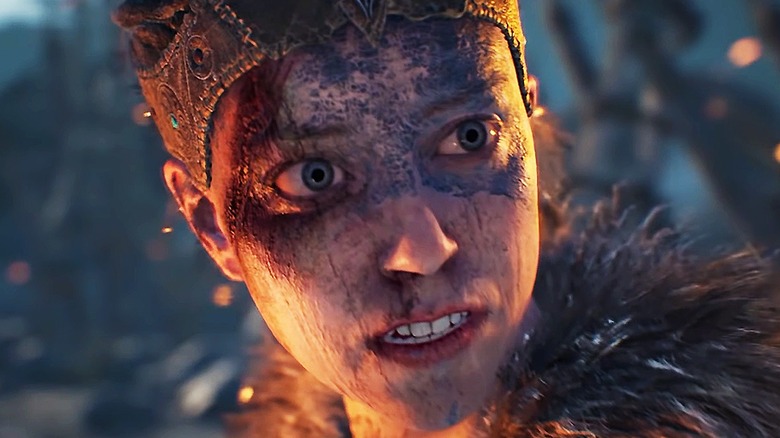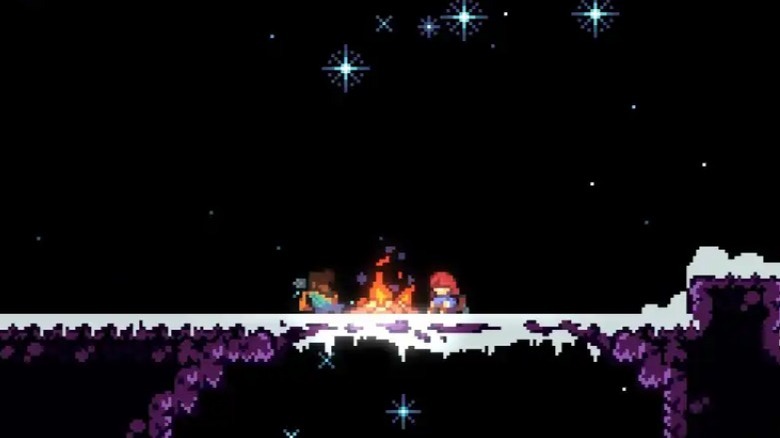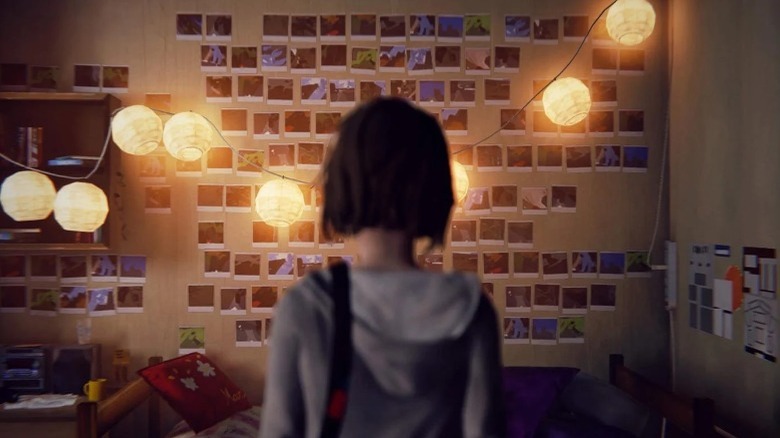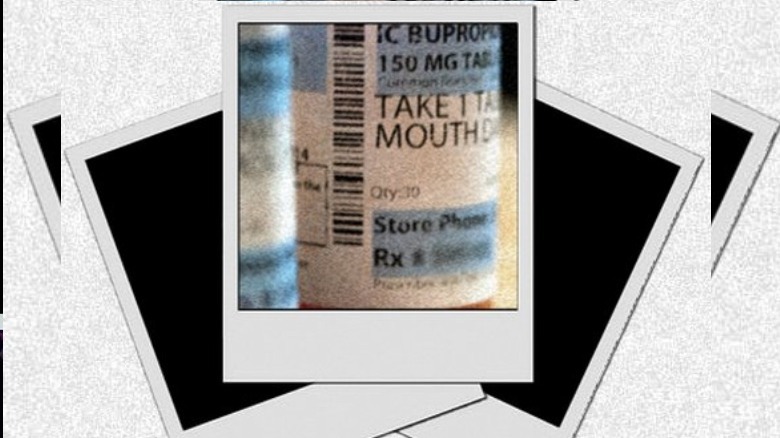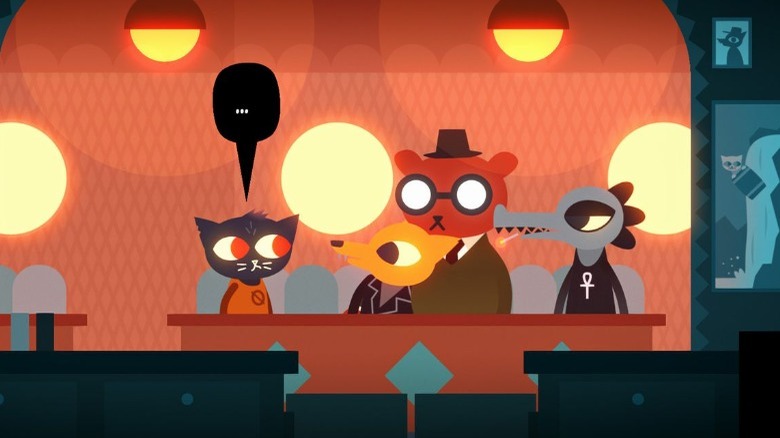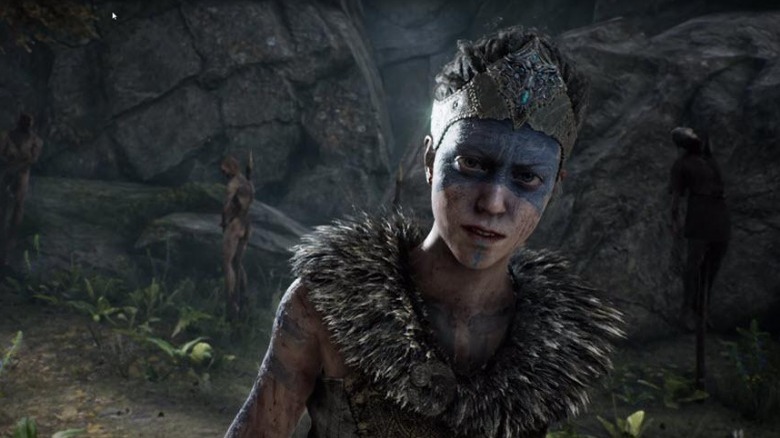The Best Portrayals Of Mental Illness In Video Games
Mental illness is a subject that deserves to be treated thoughtfully, no matter the medium. All too often it's used as set dressing in horror and thriller video games without proper consideration for the people who actually suffer from these very real disorders. According to a medical review published in "CNS Drugs," "studies consistently show that both entertainment and news media provide overwhelmingly dramatic and distorted images of mental illness that emphasise dangerousness, criminality and unpredictability ... The consequences of negative media images for people who have a mental illness are profound. They impair self-esteem, help-seeking behaviours, medication adherence and overall recovery." So, not only is this method of portraying mental illness inaccurate, it can actually be harmful since it perpetuates a lot of negative stereotypes and reinforces stigmas about mental health.
When done correctly though, the portrayal of video game characters suffering from mental disorders can actually help people identify with them and be more empathetic. The review goes on to state that "media may also be an important ally in challenging public prejudices ... It may now be time to shift attention [toward using] media to improve the life chances and recovery possibilities for the one in four people living with mental disorders."
Some games already appear to be attempting this feat, but it can be hard to distinguish between those which "other" the mentally ill and those that have done genuine research either by staffing mental health professionals or by sharing first-hand experience. Here are some of the best portrayals of mental illness in video games.
Celeste
One of the main things that separates video games from other forms of media is that the player is in control of the character. They have to choose when to push forward and when to retreat. Many games have used this in order to tell unique stories that wouldn't be possible in any other medium. "Celeste" is one of those games. Platformers have largely gone by the wayside in recent years, but "Celeste" is still worth playing in 2021 because it is both challenging and has a story that has connected with a lot of players.
The game is about a strong-willed and determined young woman named Madeline who must climb a mountain. The story slowly reveals her struggles with depression and anxiety while she pushes forward, attempting to manage her conditions as self-doubt, fear, panic attacks, and feelings of hopelessness bog her down. The very act of climbing the mountain is a reflection of how exhausting mental illness can be. It is literally an uphill battle, and the challenging nature of the game means that most players will experience plenty of setbacks as they approach the summit.
Game writer, designer, and director Maddy Thorson also stated that, like her, Madeline is a trans woman. This is an important distinction given that (via Medical News Today) "research suggests that transgender individuals are almost four times as likely as cisgender people to experience a mental health condition" due to cissexism, discrimination, violence, and barriers to healthcare. More than that though, Madeline's struggles make players want her to succeed.
Life is Strange
Dontnod Entertainment isn't known for shying away from heavy subject matter, but the first "Life is Strange" game deals with mental illness in a way few games have before or since. The game is an episodic graphic adventure that puts the player in the shoes of Max Caulfield, a high school student who moved away from her hometown of Arcadia Bay, Oregon only to return five years later in order to attend her senior year at Blackwell Academy and participate in its prestigious photography program. "Life is Strange" takes its time acclimating the player to Blackwell and its student body. There are several long transitions involving picturesque environments set to an acoustic guitar and seemingly innocuous conversations with Max's classmates. Although it's rarely stated outright, these conversations slowly reveal that several characters in the story appear to be living with different kinds of mental illness. Max herself appears to suffer from social anxiety and some fans believe she may have a form of Autism.
One of the more dramatic representations is Max's friend Kate Marsh's struggle with depression and her attempted suicide, the result of which is determined by the actions the player takes over the course of the game. Most of the characters in "Life is Strange" are handled thoughtfully, but it's worth noting that many fans have found some of the more antagonistic characters such as the bully and secondary antagonist, Nathan Prescott, to be more problematic. The game does however provide links to help those seeking resources at the end of each episode.
If you or anyone you know is having suicidal thoughts, please call the National Suicide Prevention Lifeline at 1-800-273-TALK (8255).
Depression Quest
"Depression Quest" is an indie title developed by Zoë Quinn which was released back in 2013. It's a small and intimate game, designed to put the player in the shoes of someone living with depression as they try to navigate the mundane events of day-to-day life. According to its description on Steam, "this game aims to show other sufferers of depression that they are not alone in their feelings, and to illustrate to people who may not understand the illness the depths of what it can do to people." The gameplay itself is primarily text-based, and changes based on the choices the player makes in game. The audio and scene design change based on the protagonist's state of mind, with static and greyscale used to illustrate how depression is affecting them. Most of the source material comes from Quinn's personal experiences with depression. In an interview with The New Yorker, she stated "I was diagnosed with depression at fourteen, but I couldn't find any medication that did anything for me other than making things worse." She then explained that video games became a refuge for her and she wanted to create one that adequately reflected what it felt like to live with the condition.
The game is free-to-play since its goal is to spread awareness about depression, but players are welcome to make a donation on the "Depression Quest" website, where a portion of all proceeds go to the National Suicide Prevention Hotline.
Night in the Woods
Infinite Fall's "Night in the Woods" is a game whose simplistic, yet stylish design belies an emotionally complex story and exceptionally well-written dialogue. It's likely one of the best games many players missed back in 2017. This indie title is set in a vibrantly colorful small town and features a cast of anthropomorphic animals for its characters. While the names of the conditions are never stated in-game, several of the characters display clear signs of mental illness. Many believe that the protagonist, Mae, has some sort of dissociative disorder, while she and other characters suffer from depression and various other forms of mental disorders as well. What makes the game so special is the way these disorders are a part of the characters without defining them.
Many of the character portrayals are based on the life experiences of the creators themselves. Scott Benson, the game's artist, lead animator, co-designer, and writer for most of the dialogue for the game, stated on Twitter that he is Type-2 Bipolar and struggled for years before he finally began taking mood stabilizers. He has also claimed on the official "Night in the Woods" Twitter account that "much of "Night In The Woods" is pulled pretty directly from our lives. ... The characters are us, and people we've known."
It's available on PC and most consoles, and is easily one of the coolest games under $20 you can get for the Nintendo Switch.
Hellblade: Senua's Sacrifice
One of the most ambitious attempts to show mental illness in a video game came in the form of the British developer Ninja Theory's "Hellblade: Senua's Sacrifice." This game was released back in 2017 and follows Senua as she must delve into the depths of the Norse mythology-inspired underworld in order to rescue the soul of her dead lover. It explores the struggles of mental health using the fantastical elements as a sensory stand-in for Senua's symptoms, which is why it's so frightening when those senses are manipulated. One of the most terrifying moments being when the game takes away Senua's sight during the Blindness Shard Trial.
One of the thing's which really sets it apart from most other video games that feature mental illness is that the creators of the game took steps to insure that they were giving mental health proper representation. Creator and director Tameem Antoniades made a statement in a promotional video for the Insight Project. "My principal collaborator wasn't an artist," he said, "but a scientist, and he opened my eyes to a whole new reality." The scientist he mentioned is Paul Fletcher, the Bernard-Wolf Professor of Health Neuroscience at the University of Cambridge whose expertise was reportedly instrumental in the game's design.

